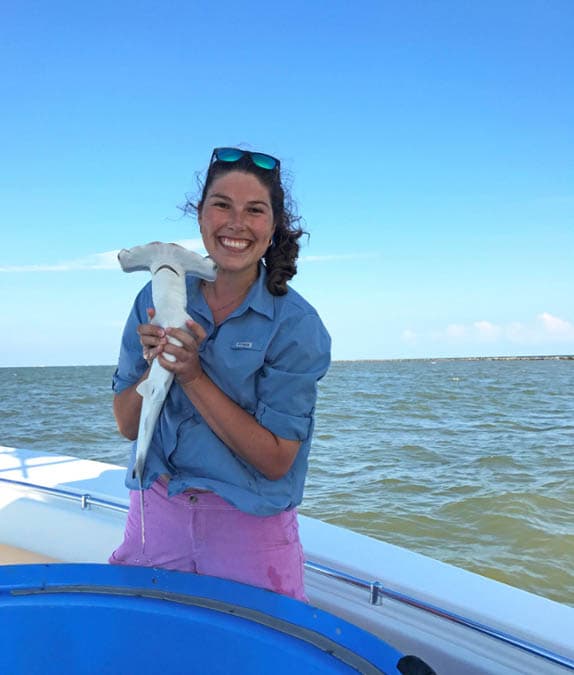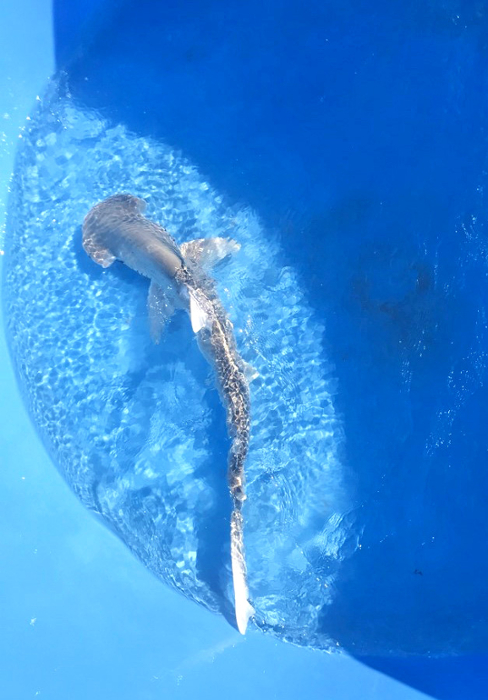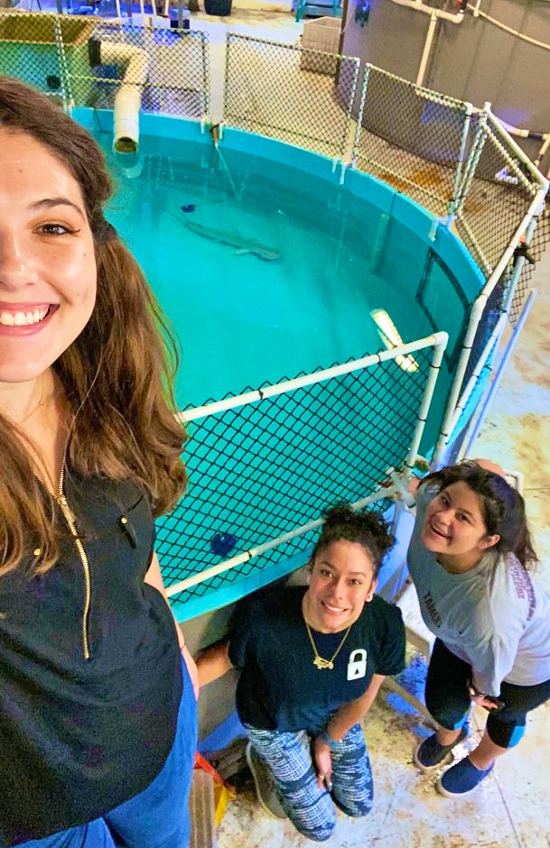National Geographic Dives into "Sharkfest" with TAMUG Ph. D. Student
July 16, 2021
Tweet
By Andréa Bolt, Communications Specialist, Division of Marketing & Communications
How JAWSome is this?! Texas A&M University at Galveston Department of Marine Biology doctoral student Dr. Lauren Eve Simonitis recently sat down with the folks from the Overheard at National Geographic podcast for a special season six episode titled “The Surprising Superpowers of Sharks” during Nat Geo’s "Sharkfest" celebration.
What specifically did you discuss about sharks?
I talked a bit about why sharks are eating odd objects and how they deal with that. I also discussed my work at the Aquarium at Moody Gardens, where I do my behavioral work with bonnethead sharks and how they respond to food cues, how they can smell fish blood and choose not to attack. Finally, I talked about their “extra” senses: electroreception and magnetoreception.

Why are sharks important to you and why do you think Shark Week & Shark Fest viewers should care?
Shark research is usually highlighted for the more visually sensational science—breaching great white sharks, tagging hammerheads, tracking tiger sharks, etc. I was happy to give an introduction to some equally interesting shark science that doesn’t get the flashy shows. Sharks are incredible, multimodal animals that integrate all seven of their senses to give them a complete picture of what’s happening around them in their environment. I love sensory biology and I love being able to share my work with the public.
I also love highlighting a lesser-known, less spotlighted shark like the bonnethead. They’re a smaller member of the hammerhead family with a unique head shape and are abundant in Galveston waters.
I think it’s important to show that sharks are not mindless eating machines that immediately attack at the smell of fish blood. They are able to utilize sensory cues (such as the smell of prey) and make decisions based on those cues. Sometimes if you’re walking by a restaurant and it smells good, you’ll go in and eat. Other times if you’re not hungry or the wait is too long or it doesn’t look appetizing, you’ll walk by the restaurant. Sharks are the same way.
Sharks are neat even if they’re not underscored with dramatic music or launching themselves out of the air at seals.
When & where can we tune in?
Any time!
National Geographic link: https://www.nationalgeographic.com/podcasts/article/bonus-episode-the-surprising-superpowers-of-sharks
Spotify link: https://open.spotify.com/episode/3akuSlqHk7HSHhVcDIXVn1?si=vEDlp1HZTzmxFsH3MA3J0w&dl_branch=1

###
Media contact:Communications Specialist
a_bolt@tamug.edu
More:
Read more about Science & Technology
Read more about Marine Biology
Read more about Marine Sciences
Read more about Student Life